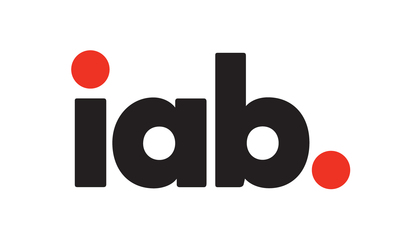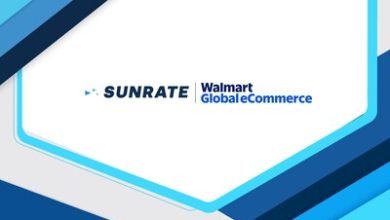
Creator Economy Ranks in the Top Three “Must Buy” Among Brands, Yet AI Use and Lack of Standardization Raise Concerns
NEW YORK, Nov. 20, 2025 /PRNewswire/ — The Interactive Advertising Bureau (IAB), the leading trade association for the digital advertising industry, today released its 2025 Creator Economy Ad Spend & Strategy Report, revealing a surge in U.S. creator economy investment that is reshaping modern media strategies.
Ad spend in the creator economy has more than doubled since 2021 from $13.9B to $29.5B in 2024. The report found creator economy ad spend is projected to reach $37 billion in 2025 — a 26% increase year-over-year, about 4x faster than the media industry overall (5.7% per IAB 2025 Outlook Study: September Update).
Creator ad spend has jumped up the ranks as brands are now treating creators as a distinct channel, not just a tactic within social media. Nearly half (48%) of ad spenders consider creators a “must buy,” ranking only behind social media and paid search.
“Leveraging the creator economy to connect with audiences is no longer experimental for marketers — it’s essential,” said David Cohen, CEO, IAB. “The significant growth we’re seeing reflects a deepening commitment from brands to invest in creator-driven strategies. However, with that maturity comes a need for clear standards, better measurement, and tools to navigate an incredibly fragmented ecosystem.”
Additional key findings from the report reveal how brands are leveraging creator advertising to activate, scale, and measure their media strategies.
Brands Leverage Creators Across the Funnel
While brands leverage creator campaigns most often for awareness and reach, the study found sales is also among their top campaign goals:
- Building brand awareness (43%)
- Reaching new audiences (41%)
- Enhancing brand reputation / trust (35%)
- Driving online sales / conversions (32%)
With online sales listed as the fourth most common goal, it’s clear brands are also utilizing creators across the purchase funnel. In fact, 40% of buyers rank overall ROI as their top KPI for creator campaigns.
“Creators are unmatched when it comes to storytelling and cultural relevance — however, brands are also seeing them as performance drivers when integrated strategically,” added Chris Bruderle, Vice President, Industry Insights & Content Strategy, IAB. “Creator marketing isn’t just about awareness — it’s proving its value across the full funnel.”
Creator Challenges: One Size Does Not Fit All
While creators have proven to be powerful partners for brands, helping them connect with audiences and drive meaningful engagement, there are still challenges in finding the right ones. A key friction point remains in identifying the right creators to partner with as a third of brands consider it their biggest hurdle.
According to the study, more than half of brands said creator reputation (58%) and audience alignment (56%) are among the top criteria when selecting a creator to align with their brand, demonstrating that credibility and relevance define effective partnerships.
“The creator marketing ecosystem is still highly fragmented, with varying partnership models, siloed budgets, and limited standardization making it tough for marketers to assess things like audience fit or creator credibility at scale,” said Zoe Soon, Vice President, Experience Center, IAB. “The result is an environment where strategic matchmaking is often more art than science, and where brands are calling for better discovery tools to guide their investment decisions.”
While AI Helps with Efficiency, Brands Still Remain Cautious on its Use
To navigate these complexities and boost operational efficiency, many marketers are turning to artificial intelligence (AI). Nearly three-in-four creator ad buyers are already using or planning to use AI within the next year.
This increasing reliance on AI underscores a strategic shift toward automation that prioritizes scale, speed, and creative optimization. Those currently using AI for creator content are leveraging it for content refinement, work efficiency, and scalability, rather than full creative replacement:
- Content editing (49%)
- Creator briefs (46%)
- Content personalization (45%)
However, despite AI’s growing role, 95% of advertisers have concerns about using AI in creator marketing overall. Brands state their top concern with AI is the loss of human connection, which is a very important consideration when “building genuine, relatable experiences” and the top reason they invest in creator marketing.
Creator Investment Needs Measurement, Standardization, and Transparency
Brands are calling for better attribution, more consistent reporting, and operational tools to link creator efforts to measurable business outcomes.
Measurement, standards, and tools that promote transparency and comparability emerged as the top opportunity areas for improvement, including:
- Advanced attribution
- Consistent reporting
- Creator discovery and vetting tools
- Standards for audience authentication and fraud prevention
Soon concluded, “Without these foundational elements, it’s difficult to link creator activations to meaningful business outcomes, which is a critical next step as creator advertising becomes a core part of modern media strategy.”
To download the full 2025 Creator Economy Ad Spend & Strategy Report click here.
Methodology
IAB’s U.S. Creator Economy ad spend projection measures the ad dollars brands intentionally invest in creators through direct partnerships for sponsored content, amplified sponsored content, and planned creator adjacencies, whereas other industry estimates take a broader total addressable market (TAM) approach combining non-advertising revenue sources (affiliate links, subscriptions, tips, and merchandise) with both intentional and incidental ad placements alongside creator content.
IAB’s methodology offers a focused view of brand-directed, intentional creator ad spend, capturing deliberate investment rather than the full monetization ecosystem surrounding creator content.
About IAB
The Interactive Advertising Bureau (IAB) empowers the media and marketing industries to thrive in the digital economy. Its membership comprises more than 700 leading media companies, brands, agencies, and technology firms responsible for selling, delivering, and optimizing digital ad marketing campaigns. The trade group fields critical research on interactive advertising, while also educating brands, agencies, and the wider business community on the importance of digital marketing. In affiliation with the IAB Tech Lab, IAB develops technical standards and solutions. IAB is committed to professional development and elevating the knowledge, skills, expertise, and collaboration of the workforce across the industry. Through the work of its public policy office in Washington, D.C., the trade association advocates for its members and promotes the value of the interactive advertising industry to legislators and policymakers. Founded in 1996, IAB is headquartered in New York City.
About Advertiser Perceptions
Advertiser Perceptions is the leader in providing research-based strategic market intelligence to the complex and dynamic media, advertising, and ad tech industries. Our curated, proprietary Ad PROS™ Network and deep relationships with the largest advertisers provide clients with an unbiased view of the market, their brand, and the competition. Our experts provide timely and actionable guidance enabling clients to improve their products and services, strengthen their brands, and drive more revenue. The largest, most innovative global media and ad technology businesses rely on Advertiser Perceptions.
View original content to download multimedia:https://www.prnewswire.com/news-releases/creator-economy-ad-spend-to-reach-37-billion-in-2025-growing-4x-faster-than-total-media-industry-according-to-iab-302621013.html
SOURCE Interactive Advertising Bureau (IAB)




